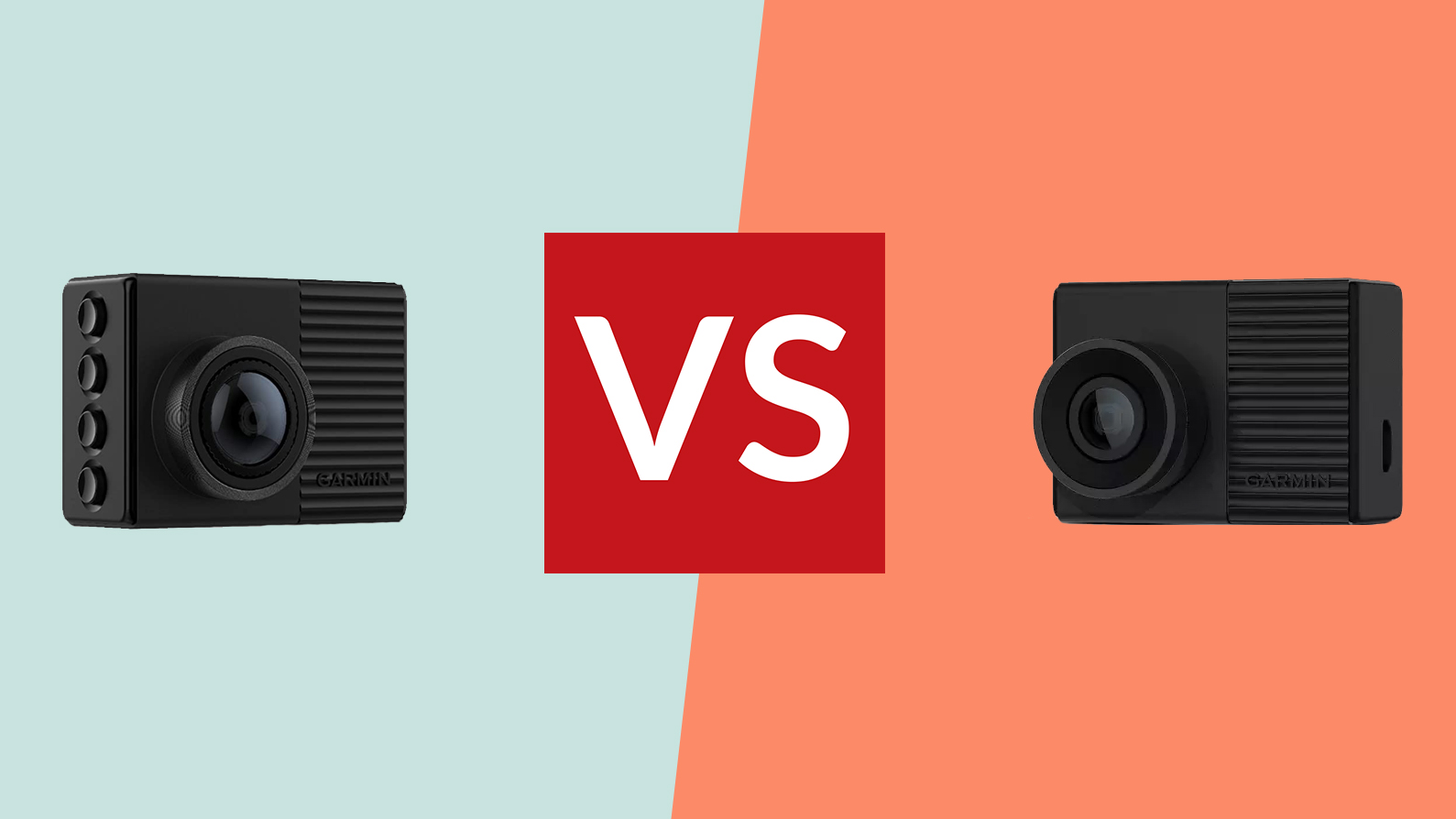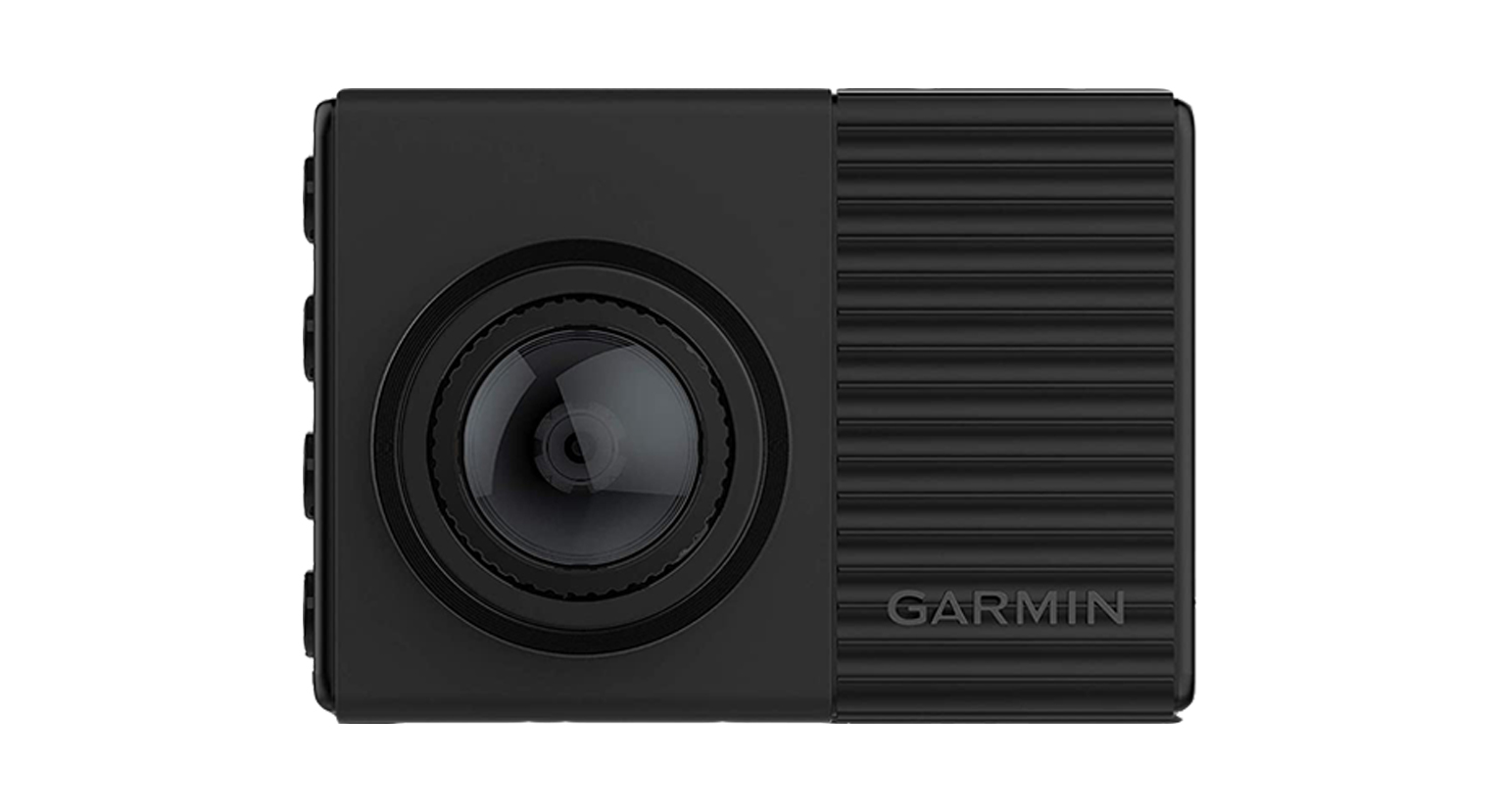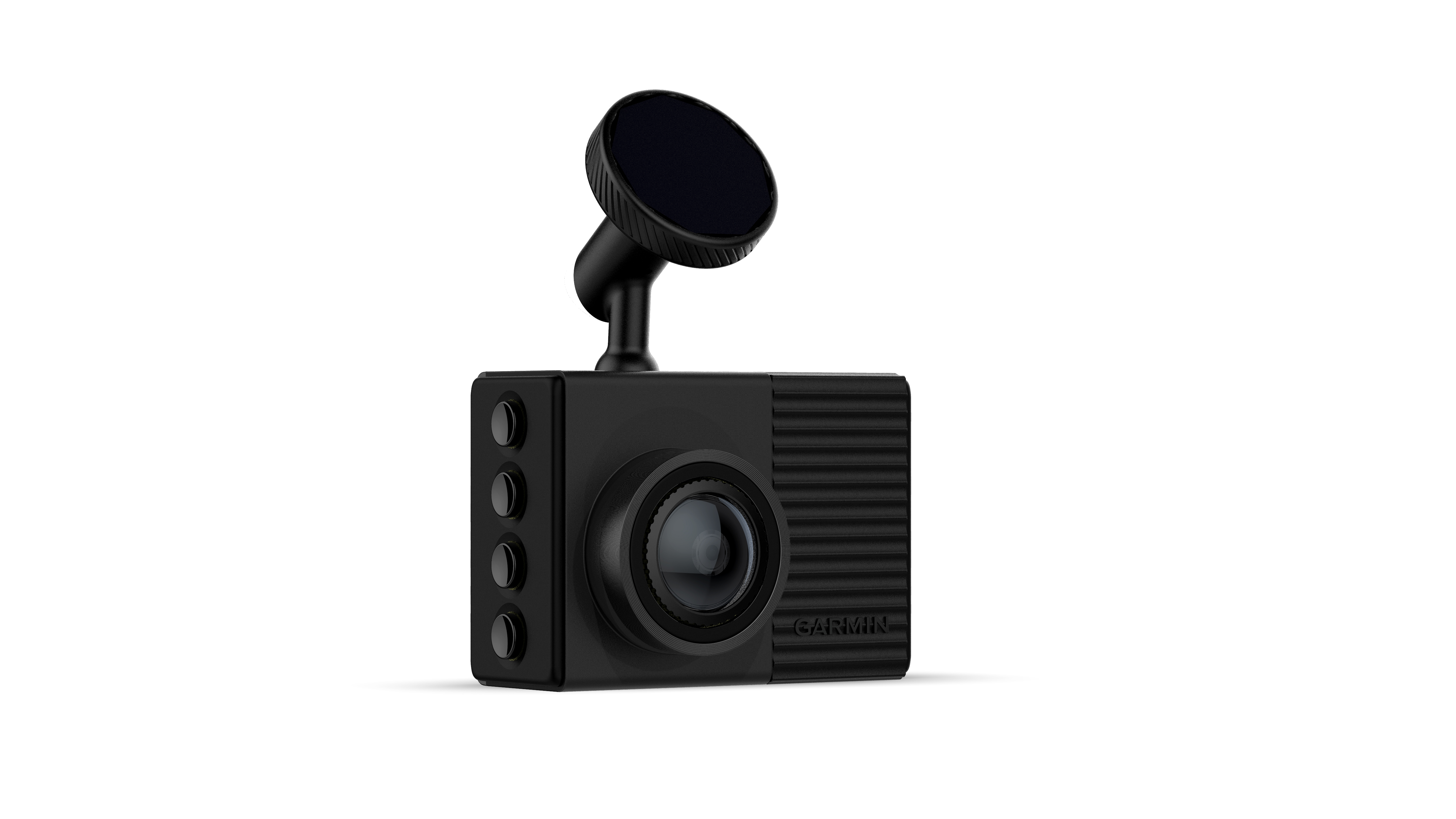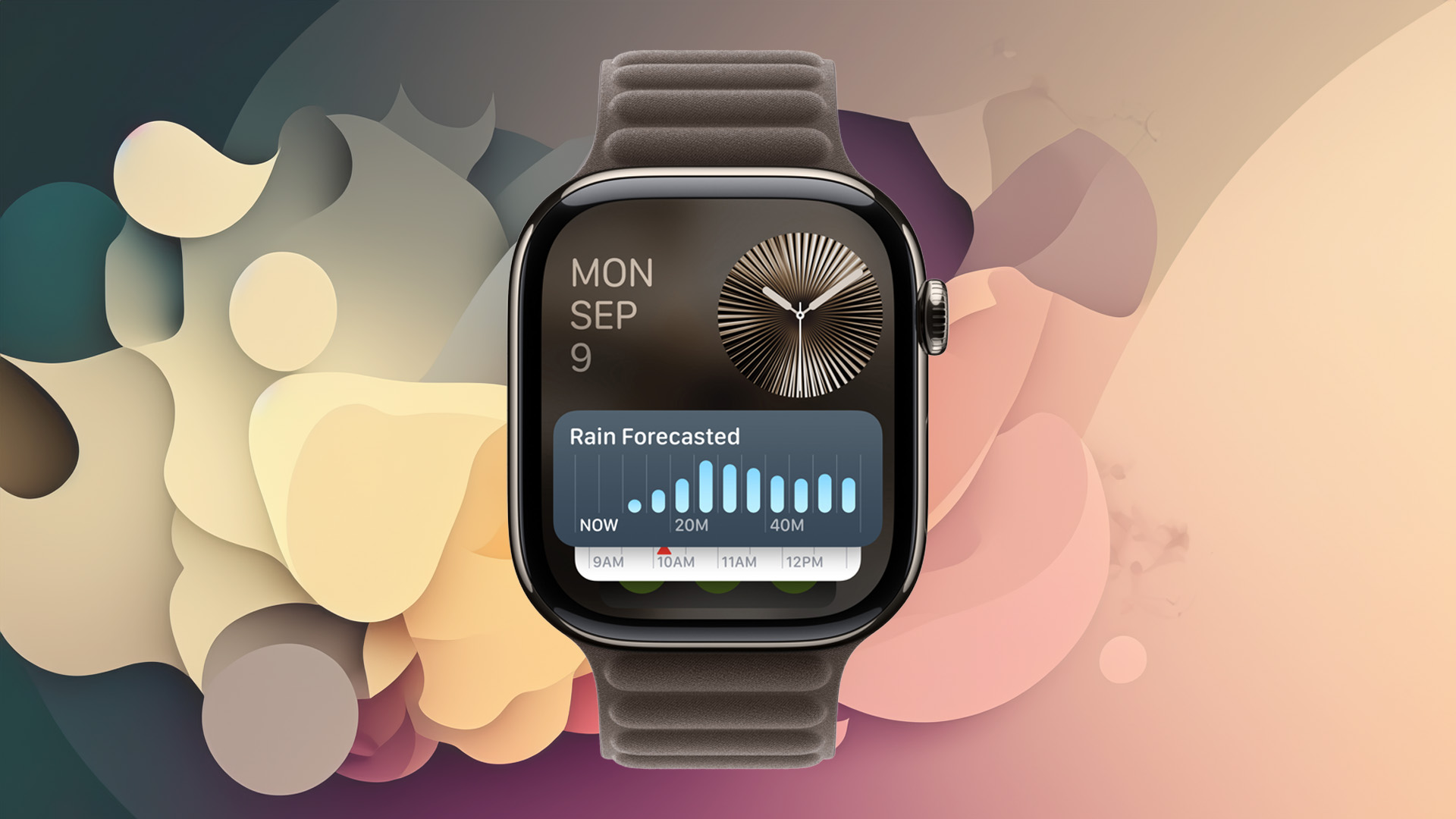

All five models of Garmin’s current dash cam range are quite similar, and perhaps no two are more similar than the Dash Cam 66W and the Dash Cam 56. They look identical and have a very similar spec sheet, but there is one key difference that we will explain in this article – and one is 25% cheaper than the other.
To help you decide which is the best dash cam to buy, here is everything they have in common and the key detail that sets them apart.
Garmin Dash Cam 66W vs 56: Design and hardware

As we mentioned above, these Garmi dash cams look very similar – in fact, they are physically identical. Both measure 5.62 x 4.05 x 2.14cm, however the Dash Cam 56 is fractionally lighter at 59.5g compared to 61.3g for the Dash Cam 66W.
Both are remarkably compact considering their capabilities, and their matt black bodies means they hide neatly behind your car’s rear view mirror. On the back, they both have a 2.0-inch TFT LCD display with a resolution of 320 x 240. Both have a set of four buttons on the side for navigating through the simple user interface.
Garmin’s Dash Cam mounting system is one of the simplest on the market today. It is a short arm that attaches to the dash cam with a ball-and-socket joint that makes the camera easy to move but also grips it tightly to keep video smooth and steady.
The short arm then attaches to a small coin-sized metal disc that is magnetic on one side and has adhesive on the other. It therefore sticks to your windscreen with the adhesive, then snaps to the dash cam mount with a magnet, making it very easy to fix the camera into place and remove it if you want to transfer it to another vehicle.
Both cameras have an integrated lithium-ion battery, but this is only capable of powering the camera for 30 minutes. This is fine for short journeys, but ideally you’ll want to plug the camera in using its included USB cable. It can be powered by the car’s USB port or 12V socket, and hard-wiring to the car for a more permanent installation is also possible.
Sign up to the T3 newsletter for smarter living straight to your inbox
Get all the latest news, reviews, deals and buying guides on gorgeous tech, home and active products from the T3 experts
Garmin Dash Cam 66W vs 56: Camera and features

Both cameras record video with a resolution of 1440p, which is above 1080p Full HD, at 60 frames per second, and feature HDR. The key difference between the two is their field of view, which is 140 degrees for the Dash Cam 56 and 180 degrees for the Dash Cam 66W.
This means the video captured by the latter has a wider field of view, helping your footage to show more to the left and right of your car. A wider view means the camera is more likely to record incidents that happen off to the sides of your vehicle. If mounted to a wide car or truck, the Dash Cam 66W’s wider view could make all the difference, but for smaller cars the extra view might not be as useful.
Back to what the two cameras have in common. They both work with Garmin’s Auto Sync system where up to four cameras can be fitted to the same car, recording their video in sync with one another.
They also both work with the Garmin Drive smartphone app, which can be used to view footage saved to the camera’s microSD card (not included), and they have GPS for adding locational data to your recordings. Video is recorded whenever the camera is switched on and sections of footage are permanently saved when a collision is detected. When the memory card gets full, the oldest footage is written over first (apart from collisions, which remain saved).
Beyond acting as a simple dash cam, both of these Garmin models have a suite of driver assistance systems, including forward collision and lane departure warnings, plus an alert that notifies you when traffic ahead starts moving. There are also optional alerts for red light and speed cameras, and both have a voice control system where video can be saved with a voice command.
Garmin Dash Cam 66W vs 56: Price
Here is the other key difference between the two cameras. As of March 2021, the Dash Cam 56 has a retail price of £150, while the Dash Cam 66W is £200. That £50 difference is fairly significant given the only difference is the more expensive model’s wider field of view.
While it is hard to put a price on the camera’s ability to record crucial footage in the event of a collision, drivers of smaller vehicles should consider the cost-saving of the Dash Cam 56 and its narrower field of view.
Liked this?
- Best dash cam: top car dash cams tried and tested
- Best cheap dash cam deals
Alistair is a freelance automotive and technology journalist. He has bylines on esteemed sites such as the BBC, Forbes, TechRadar, and of best of all, T3, where he covers topics ranging from classic cars and men's lifestyle, to smart home technology, phones, electric cars, autonomy, Swiss watches, and much more besides. He is an experienced journalist, writing news, features, interviews and product reviews. If that didn't make him busy enough, he is also the co-host of the AutoChat podcast.
-
 Apple Watch is set to get Apple Intelligence this year, but only with a little help from a friend
Apple Watch is set to get Apple Intelligence this year, but only with a little help from a friendBring on watchOS 12
By Britta O'Boyle
-
 Your Smart TV might be getting 16 new channels for free – here's how to check
Your Smart TV might be getting 16 new channels for free – here's how to checkTVs with Freely will be able to stream a host of new channels "in the coming month"
By Rik Henderson